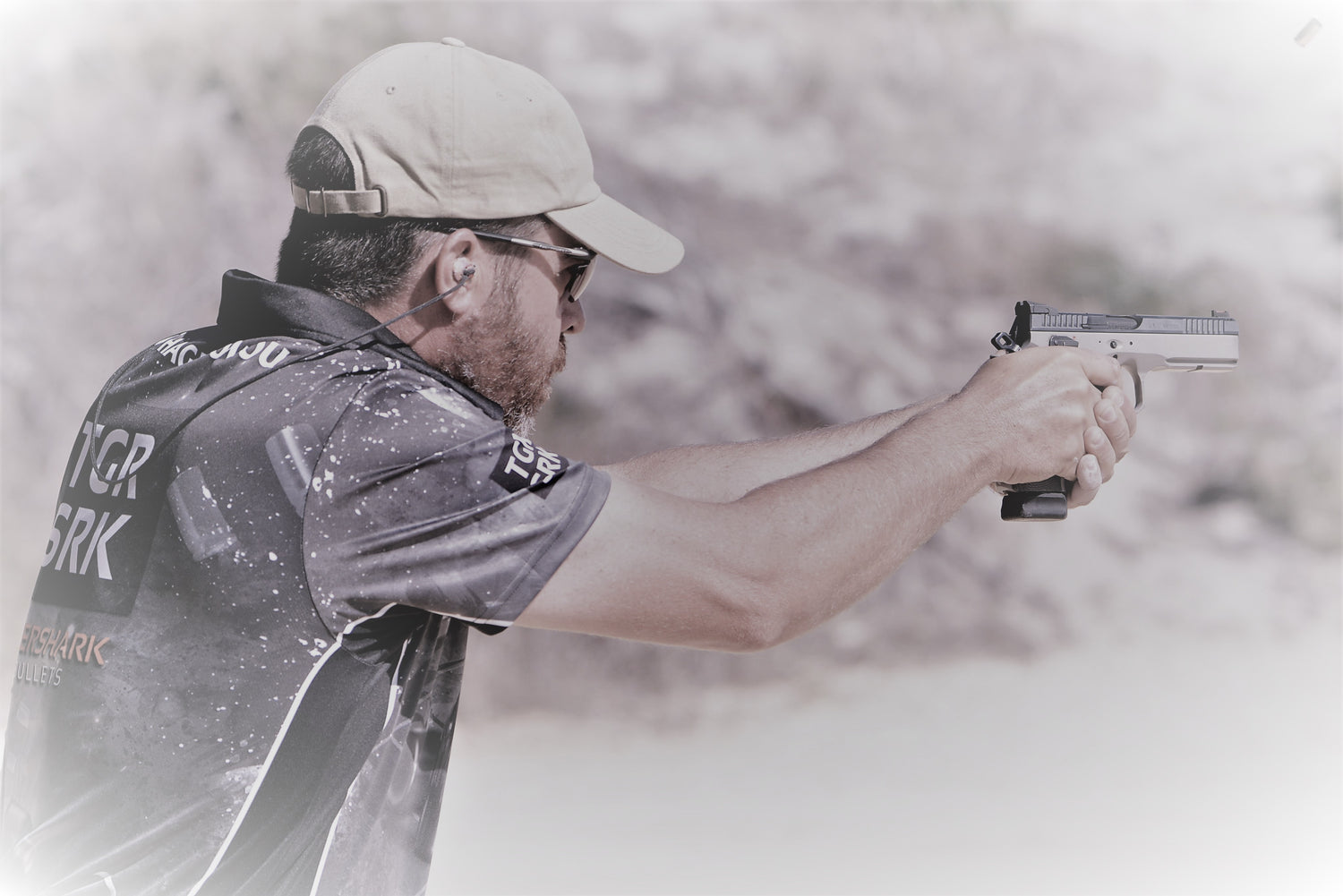Recoil - Heavy or Light Bullets?
A question often asked is; what’s the best bullet weight to use? Of course, there are several factors that combine to achieve the best performance from your pistol and bullet weight is only one small part. Here we will look at the relationship between bullet weight and recoil.
Many handgun competitions require a minimum specification for ammunition, usually referred to as Power Factor (PF) PF = bullet weight in grains X velocity in FPS /1000.
If we look at IPSC, for example, there is a requirement for a minimum PF of 125 for divisions shooting minor. So, a 125-grain bullet travelling at 1,000 FPS will achieve the minimum required 125PF – 125 X 1000/1000=125. likewise, a 145-grain bullet travelling at 863 FPS will also achieve 125 PF 145 X 863/1000=125. It’s worth noting that a competition shooter will not load to the very minimum PF required but will load to a comfortable margin above minimum to allow for variations in chronograph readings, bullet and powder charge weight.
So, what’s the difference? Newton’s Third Law states that; for every action, there is an equal and opposite reaction. So, in terms of shooting it means that the powder explosion produces hot gases that expand pushing the bullet and gas down the barrel (action) and so the equal and opposite reaction to this is recoil (the rearward movement of the gun when it is discharged). Recoil also causes the muzzle of a pistol to rise and rotate due to the centreline of the barrel being above the centre of contact (to the shooter).
An established fact is that at a given PF a heavier bullet going relatively slowly will produce less recoil (and muzzle rise) than a light bullet going faster. This is because the lighter bullet requires more powder and more powder produces more gas which adds to the weight of matter ejected from the barrel (bullet + gas) which means more recoil. Additionally, the lighter bullet will spend less time in the barrel which means a faster recoil impulse and thus a bit more muzzle rise. There are other factors at play such as weight of the firearm, grip as well as OAL and crimp with both having an impact on velocity and consequently recoil/PF.
Different bullet shapes can allow seating at different OAL’s. A bullet that can be seated at a lower OAL will increase pressure (with a given powder load) as opposed to one seated longer. A bullet that lends itself to be seated at a lower OAL gives you the option to use a lower charge of powder with the same weight of bullet. Round Nose bullets tend to have a longer OAL as they typically have a long ogive (curve) that requires the bullet to be seated so that the case mouth is in contact with the full diameter of the bullet (before the ogive starts). A truncated cone shape such as a Tigershark 9MM/38 Super Hollow Point has a long straight bearing surface prior to the quite sharp change of angle and can be loaded lower - right up to just below where the ogive starts.
For example, a 9MM 145GN Round Nose bullet seated at 29.50 OAL with a charge weight of 3.3 GNs of AP70 gives a PF of 128.9* whereas a 145 Hollow Point with a charge weight of 3.0 seated at a shorter OAL of 26.70 achieves the same PF. So, the 2.8MM reduction of OAL allows the powder to be dropped by 0.3GNs thereby (slightly) reducing the amount of gas expelled when fired and in turn reducing the recoil using the same weight of bullet.
So, a rule-of-thumb formula to achieve less recoil is to choose a heavier bullet with the smallest charge possible to achieve the desired PF.
However, it should be noted that some guns will give better accuracy with certain weights of bullet, OAL and/or powder and this may not be the combination producing the least recoil. Recoil is often not that much more between given weights/charges but does often produce a different “feeling”. Often described as a more “snappy” (light fast bullet) rather than “pushy” (heavy slow bullet). Some shooters prefer the feel of a snappy recoil and claim it helps get the sights back on target faster, others prefer the pushier recoil of the heavier/slow combination. In the end it comes down to personal preference. Experiment for yourself and see which your gun and you prefer. We have sample packs available so that you can try different weights (and shapes) to determine what you prefer.
+Note using a pistol with a compensator is a different proposition as the compensator requires a great deal of gas to hold the muzzle down. So, for these pistols a light bullet going fast in combination with a “slow-ish” powder will produce a greater volume of gas necessary to work the compensator to keep the muzzle down.
*Data from Quickload

